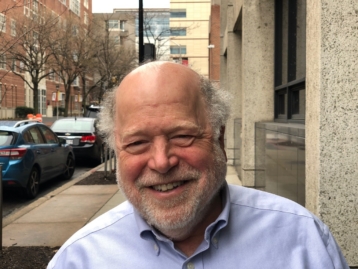This is a virtual seminar; link will be made available by email.
Electro-Metabolic Signaling regulates blood flow in heart
 Blood flow in mammalian heart is tightly regulated so that local flow is always precisely matched to the specific metabolic need. How this process of blood flow regulation is managed so that it accurately and rapidly reflects the needs of the tissue is the focus of the work presented. In the process three vexing questions are also answered: Why are there so many KATP channels in ventricular myocytes? How is it that the A-V O2 difference across the heart is maintained at a maximal level under all flow conditions? How are upstream arterioles regulated by the downstream metabolic need?
Blood flow in mammalian heart is tightly regulated so that local flow is always precisely matched to the specific metabolic need. How this process of blood flow regulation is managed so that it accurately and rapidly reflects the needs of the tissue is the focus of the work presented. In the process three vexing questions are also answered: Why are there so many KATP channels in ventricular myocytes? How is it that the A-V O2 difference across the heart is maintained at a maximal level under all flow conditions? How are upstream arterioles regulated by the downstream metabolic need?
Each ventricular myocyte in the heart is supplied with O2 and food by multiple capillaries which surround them and are in intimate contact with them. The flow through the end-arterioles and capillaries is locally regulated by contractile elements that include vascular smooth muscle (VSM) cells and pericytes. The entire system is electrically interconnected by gap junctions such that the ventricular myocytes are connected to the capillary endothelial cells (cEC’s) which are, in turn, connected to each other and to the pericytes and the VSM cells. In addition, the ventricular myocytes contain a huge number of metabolically-sensitive potassium channels, the “KATP channels”. These K+ channels drive the “Electro-Metabolic Signaling” (EMS) system. The KATP channels are normally closed by physiologically high levels of [ATP]i – about 10 mM. Under such “control” conditions, the cardiac action potential (AP) has a “fully energized” shape. When ATP is consumed in the ventricular myocytes in excess of production, the [ATP]i falls (while [ADP]i rises). These changes in [ATP]i and [ADP]i increase the open probability (Po) of the KATP channels and this underlies a time-averaged hyperpolarization (negative shift) of the ventricular myocyte membrane potential (Vm). The resulting hyperpolarizing current that spreads throughout the entire electrical network is small and smooth due to the “low pass filter” characteristic of the transfer of charge. Thus, the capillary endothelial cells (cEC’s), the pericytes and the vascular smooth muscle (VSM) cells smoothly hyperpolarize as they track the time-averaged change in ventricular myocyte action potential (AP) shape. This hyperpolarization of the vascular electrical network decreases the Po of Ca2+ channels in the VSM cells and pericytes thereby decreasing the intracellular [Ca2+]i which underlies the relaxation of the contractile cells to increase blood flow. By this chain of events, increased metabolic activity in the ventricular myocytes drives the increased blood flow which provides an increase in O2 and food for the ventricular myocytes. The increase in blood flow and nutrients and O2 to the ventricular myocytes enables them to increase ATP production and restore [ATP]i to a normal level.
Our findings demonstrate the pivotal roles of local cardiac myocyte metabolism and KATP channels in the regulation of blood flow in the heart. We also show a minor role of inward rectifier K+ (Kir2.1) channels in the cEC’s in regulating blood flow in the heart. These findings establish a conceptually new framework for our understanding of the hugely reliable and incredibly robust local electro-metabolic signaling which provides critical regulation of blood flow in heart.
The recorded seminar can be viewed here (CRC members login needed).








